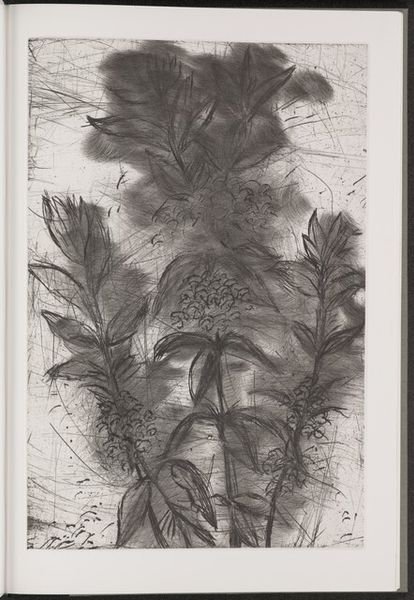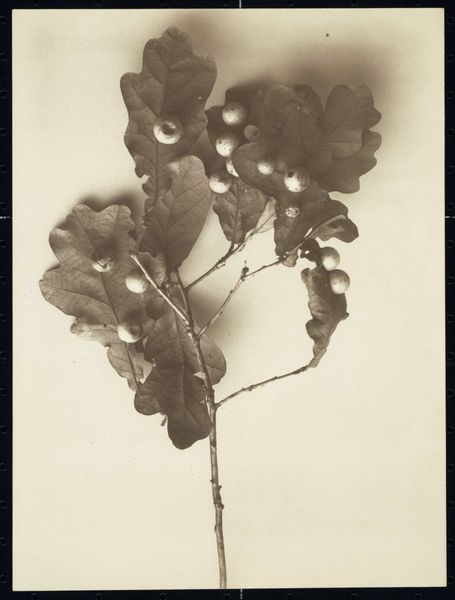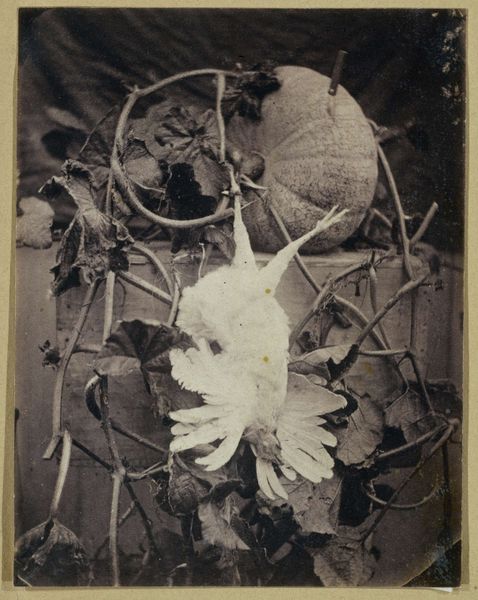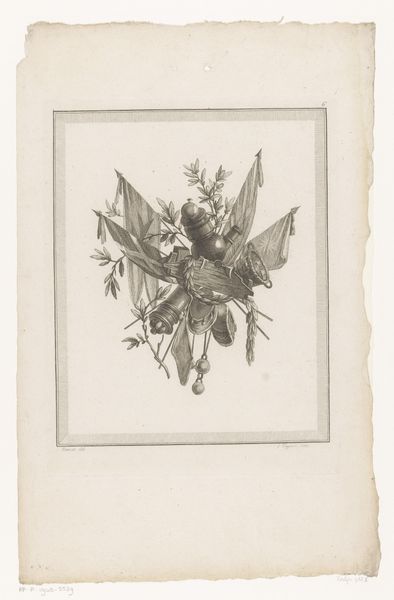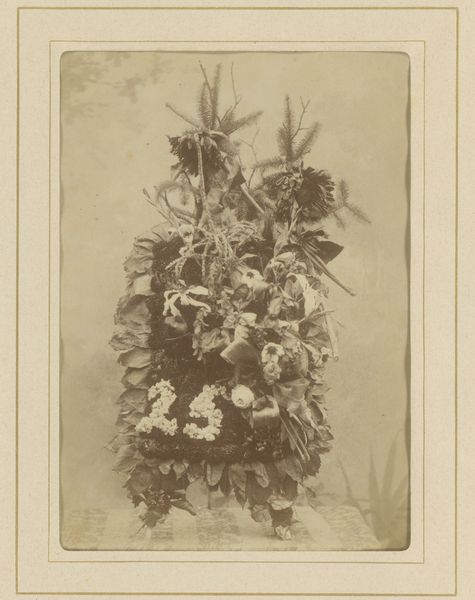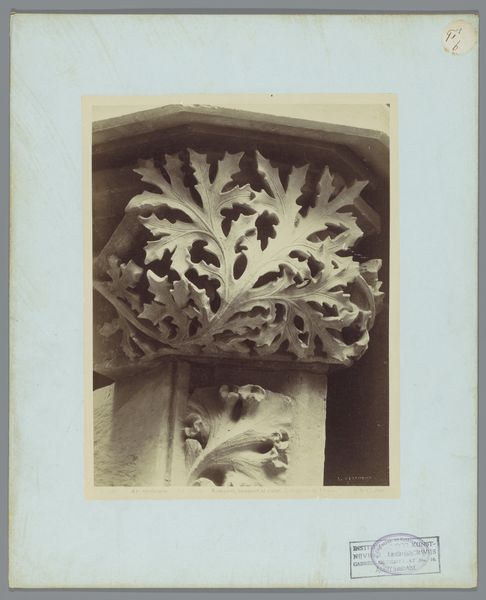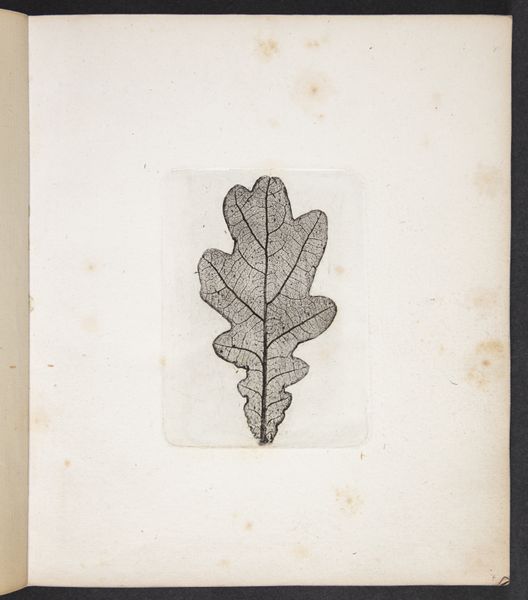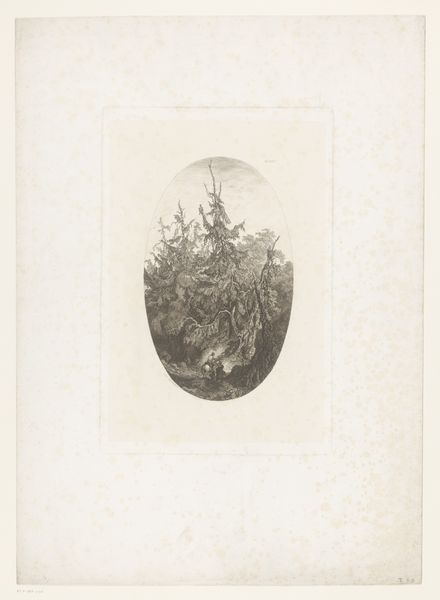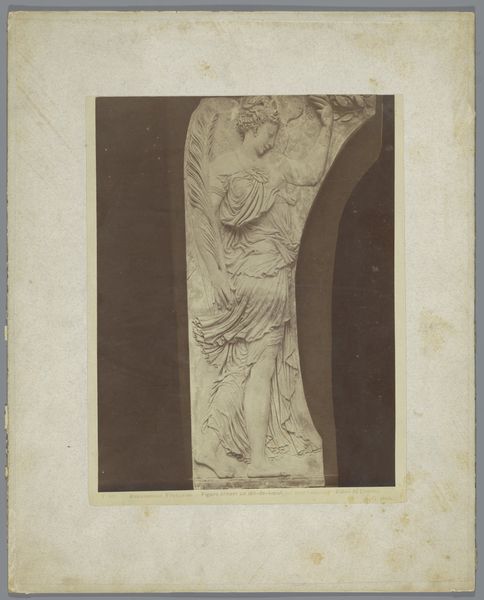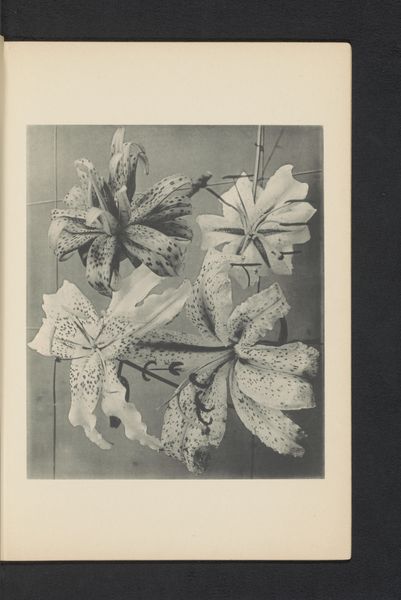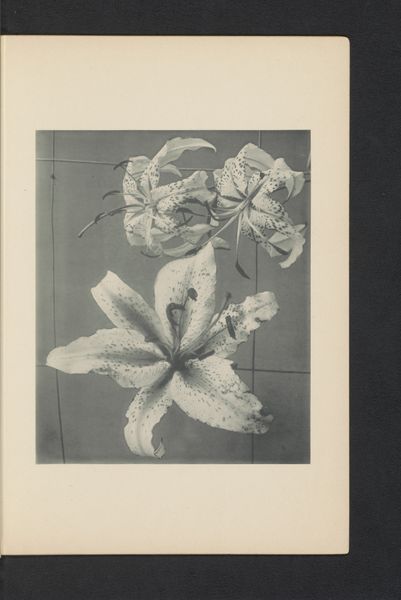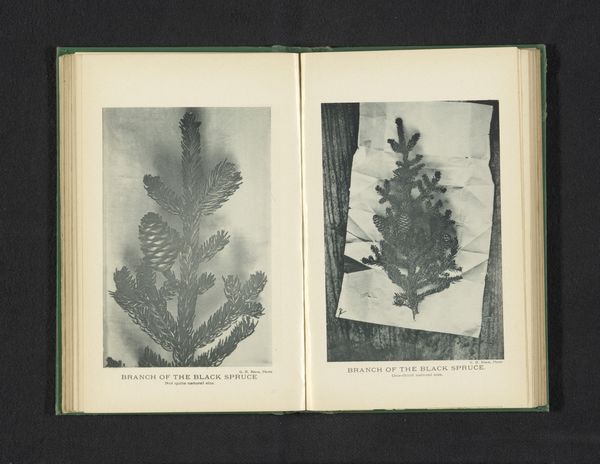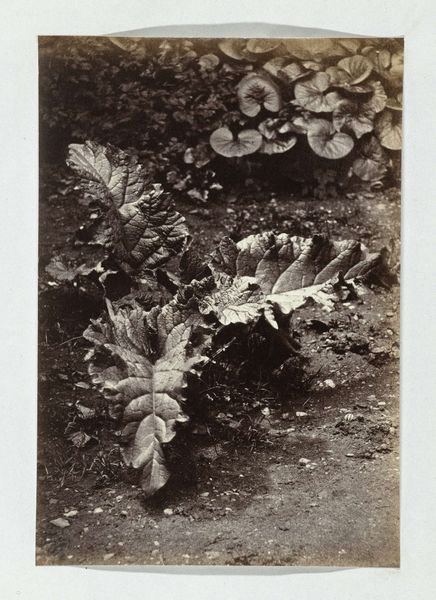![[Study of Leaves on a Background of Floral Lace] by Charles Hippolyte Aubry](/_next/image?url=https%3A%2F%2Fd2w8kbdekdi1gv.cloudfront.net%2FeyJidWNrZXQiOiAiYXJ0ZXJhLWltYWdlcy1idWNrZXQiLCAia2V5IjogImFydHdvcmtzLzI2ZDgxNjcyLTJhYWItNGZmNy1hY2EwLTI0M2QxN2E0ZjQzYS8yNmQ4MTY3Mi0yYWFiLTRmZjctYWNhMC0yNDNkMTdhNGY0M2FfZnVsbC5qcGciLCAiZWRpdHMiOiB7InJlc2l6ZSI6IHsid2lkdGgiOiAxOTIwLCAiaGVpZ2h0IjogMTkyMCwgImZpdCI6ICJpbnNpZGUifX19&w=3840&q=75)
[Study of Leaves on a Background of Floral Lace] 1864
0:00
0:00
paper, photography
#
pencil sketch
#
paper
#
photography
#
pencil drawing
Dimensions: Image: 46.7 x 36.7 cm (18 3/8 x 14 7/16 in.) Mount: 56.7 x 45.3 cm (22 5/16 x 17 13/16 in.)
Copyright: Public Domain
Editor: This is Charles Hippolyte Aubry's "[Study of Leaves on a Background of Floral Lace]" from 1864, held at the Met. The contrast between the crisp leaves and the delicate floral lace creates an intriguing juxtaposition. How do you read the combination of such disparate textures in this photograph? Curator: For me, it's about interrogating the materials and the process of making, really understanding Aubry’s manipulation of them. Think about lace at the time, a luxury item produced through intensive labor. Then contrast that to the accessibility and the commonality of leaves as raw materials. How are we meant to value each element? Editor: So, you're suggesting it questions the relationship between natural resources and manufactured goods? Curator: Precisely! Photography itself was a developing technology, a new means of production. By placing organic forms against manufactured textiles and capturing this all through photography, Aubry draws our attention to modes of artistic and industrial production. Editor: That makes sense. It moves beyond simply appreciating its aesthetic qualities, and encourages viewers to consider the socio-economic implications embedded in the artwork. So, do you think he was making a specific commentary? Curator: Perhaps Aubry wanted us to confront the evolving relationship between nature, industry, and art itself, alluding to both the beauty and perhaps even the exploitative practices within the contemporary industrializing world. Consider how these elements relate to consumer culture in the mid-19th century. What is being consumed here? Editor: I hadn't considered it that way. I initially just saw a pretty still life. Curator: It’s easy to appreciate the aesthetics at first glance, but the work really becomes fascinating when considering material value and production within the art historical context. Editor: Absolutely, this really highlighted the significance of looking beyond the surface and thinking critically about the materials, the making, and the social context surrounding its creation.
Comments
No comments
Be the first to comment and join the conversation on the ultimate creative platform.
